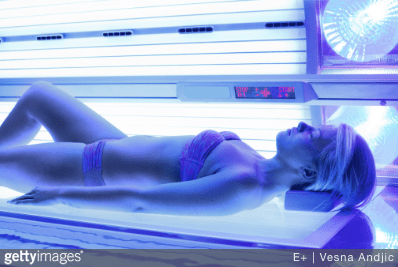By Sara Worth Mullally
The sun never burned her. Carson James was one of those people that only got a bronze glow.
That is, until the sun burned her big time. James was 21 when she was diagnosed with melanoma, the deadliest form of skin cancer.
“People our age don’t believe we can get melanoma. This is the main problem,” James said. “This is why it’s gained the nickname the ‘silent killer.’”
Melanoma is not only the most common type of cancer, but also the leading cause of cancer death in women ages 15 to 29, according to the Melanoma Research Foundation.
The Skin Cancer Foundation estimates that 419,000 cases of melanoma in the United States are linked to indoor tanning each year.
In July 2009, the International Agency for Research on Cancer, a sector of the World Health Organization, classified tanning beds as “carcinogenic to humans,” the highest cancer risk category.
Almost seven years have passed, yet the Food and Drug Administration estimates that 30 million Americans still use tanning beds each year. College students make up a large percentage of that number, with 43 percent using tanning beds.
SMU senior Bridger Warlick uses tanning beds because they have always been present in her life.
“My 86-year-old grandmother used to have a tanning bed in her home and has continued using them throughout her life,” Warlick said. “She claims that anything in this world can kill her, so she might as well have a tan.”
The Center for Disease Control (CDC) reports that tanning beds can cause eye cancer and cataracts even if eye protection is used. They also cause premature aging and change the texture of your skin.
Despite evidence, some dermatologists can turn a blind eye to the negative effects.
“I use tanning beds to avoid acne, especially in the winter, via my dermatologist’s recommendation,” 21-year-old student Alexis Wolfe said.
Wolfe’s dermatologist did inform her of the risks.
Thirteen states have banned indoor tanning for minors. CDC research shows that the use of tanning beds has decreased amongst minors in these states. Several countries have restricted indoor tanning to those over 18 years old only. Two countries, Brazil and Australia, have banned tanning beds all together.
The risks are getting through to some. Pre-med major Rena Clayton Rolfe stopped using tanning beds after she understood just what she was subjecting her body to.
“I realized how bad they were for you,” Rolfe said. “Also that I could do self tanner and get the same result.”
Like Rolfe, James will never enter an indoor tanning salon. While her melanoma has been successfully removed, the experience heightened her awareness of the sun and its harsh effects.
“Even though it’s so hot in Texas, I wear long sleeved shirts to workout outside,” James said. “I limit my time in the sun during peak hours. I also never leave my house without sunscreen on, even on a cloudy day.”
James encourages everyone to visit his or her dermatologist for annual skin exam. The SMU Health Center provides monthly skin exams and also has local dermatologists to refer students too.
“Anyone is at risk, and its time to really be aware of your body,” James said. “Annual skin exams can save a life. I’m sure glad it saved mine.”









